Sea Horseshoe Crab in Halong: How Locals Cook It and Should You Try It?
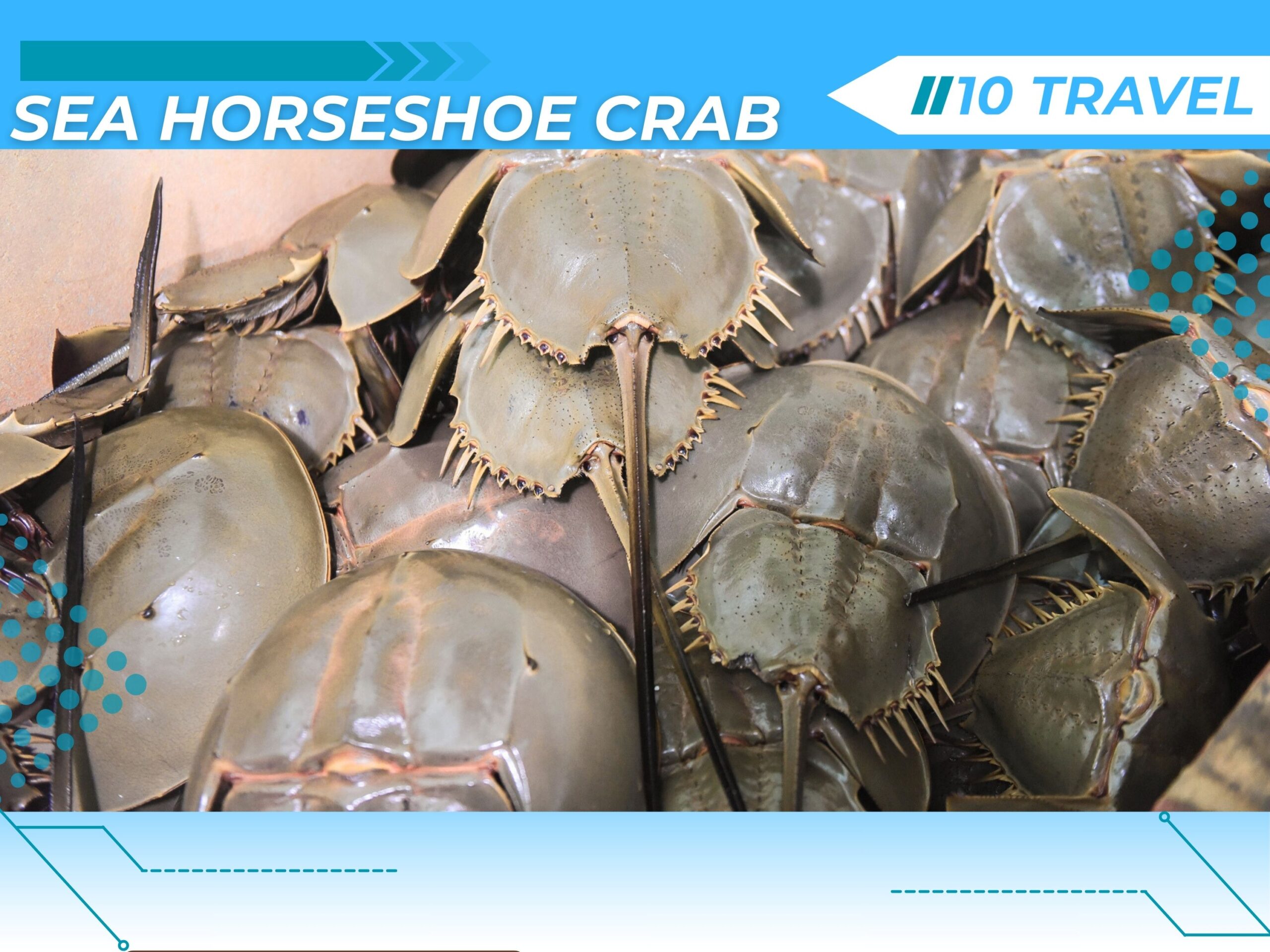
Halong is famous worldwide for its limestone cliffs and emerald waters, but its food culture is just as unforgettable. Among the squid patties, grilled oysters and steaming bowls of noodles, one dish stands out for its rarity and curiosity factor: sea horseshoe crab, known locally as sam bien.
You might first spot it at a Halong seafood market, Its ancient-looking shell resting among crabs and clams. Soon after, the fragrance of lemongrass, garlic and smoky charcoal will tempt you closer. But here’s the real question: would you try it once you see how locals cook it? This guide explains what sam bien is, how Halong people prepare it, safety tips, prices and the best places to taste it so you can decide for yourself.
Meet Sam Bien — Halong’s Conversation-Starter
What It Is
Sam bien is a species of horseshoe crab, not commonly found on menus outside certain coastal areas of northern Vietnam. It has been part of Halong’s culinary tradition for generations, with locals praising its roe and unique texture.

Flavor & Texture Profile
-
Meat: firm, mildly sweet, somewhat similar to crab but denser.
-
Roe: rich, creamy and smoky once grilled, often the most prized part.
-
Overall experience: bold and unusual, often best balanced with fresh herbs, chili and sour notes.
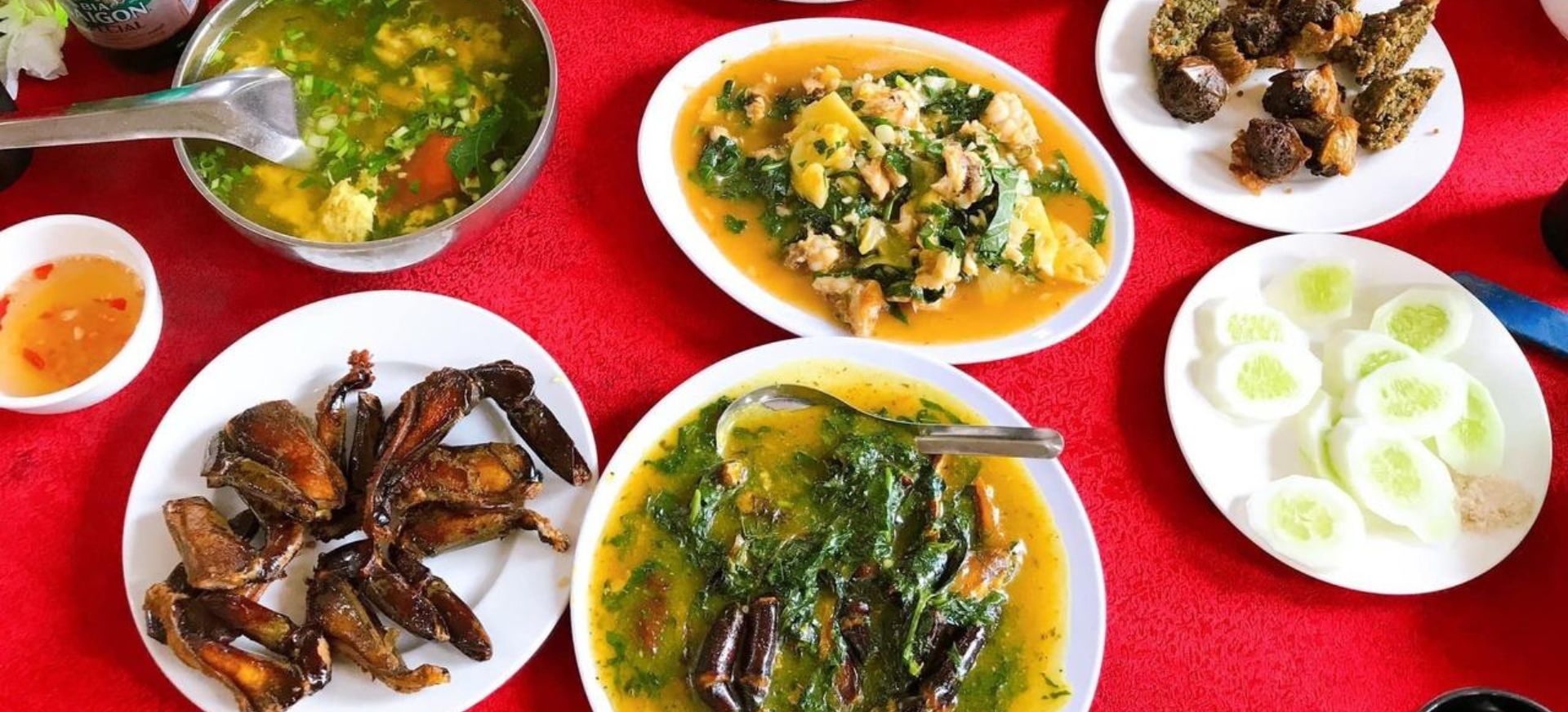
When It’s Available
Sam bien is seasonal and usually served in established seafood restaurants rather than every street stall. It’s considered a “special request” item rather than a daily staple.
Vietnam Launches Remarkable Cave Dining Accompanied by Cultural Spectacle
How Halong People Cook Sea Horseshoe Crab
The magic lies in the cooking methods, designed to balance richness and enhance aroma.
Grilled Sam (Sam Nuong)
The crab is split, cleaned and placed shell-side down over a charcoal grill. Lemongrass, garlic and scallions are added on top, infusing the roe with smoky fragrance. Diners scoop it out with herbs and rice paper.
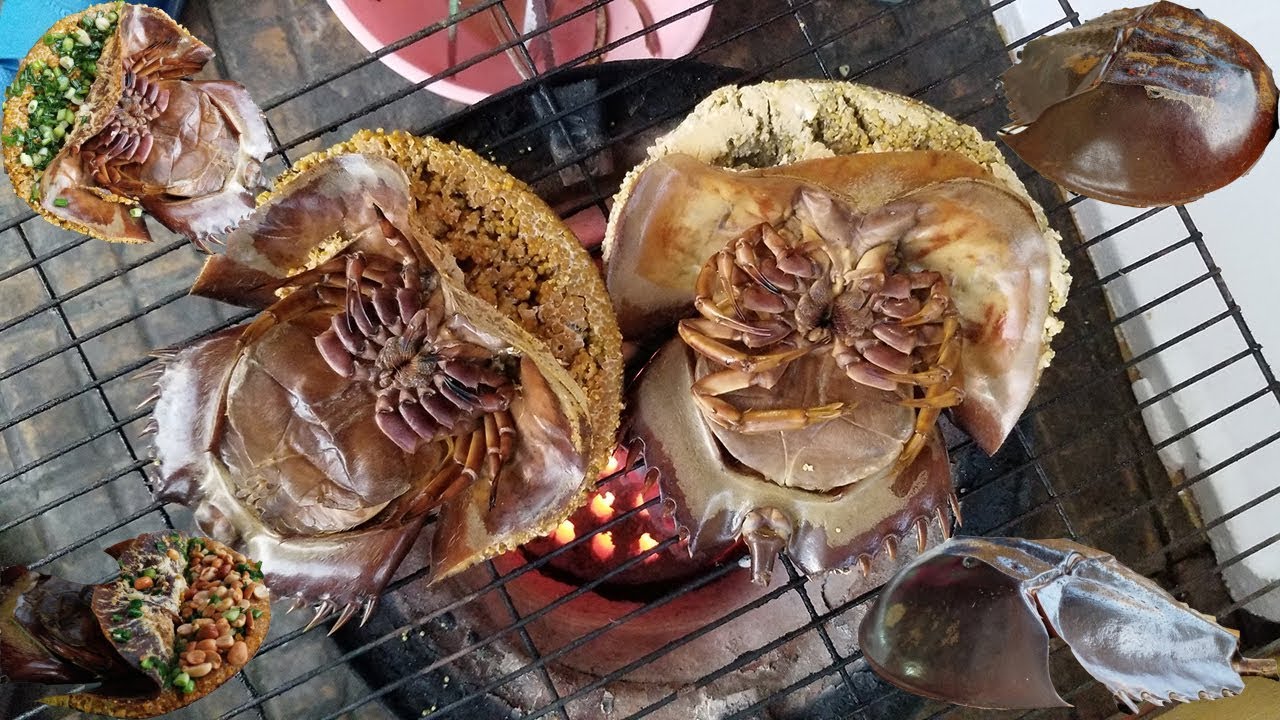
Stir-Fried with Lemongrass & Chili (Sam Xao Sa Ot)
Bite-sized pieces are wok-tossed with lemongrass, chili and fish sauce. The spice cuts through the richness, making it a favorite with cold beer.
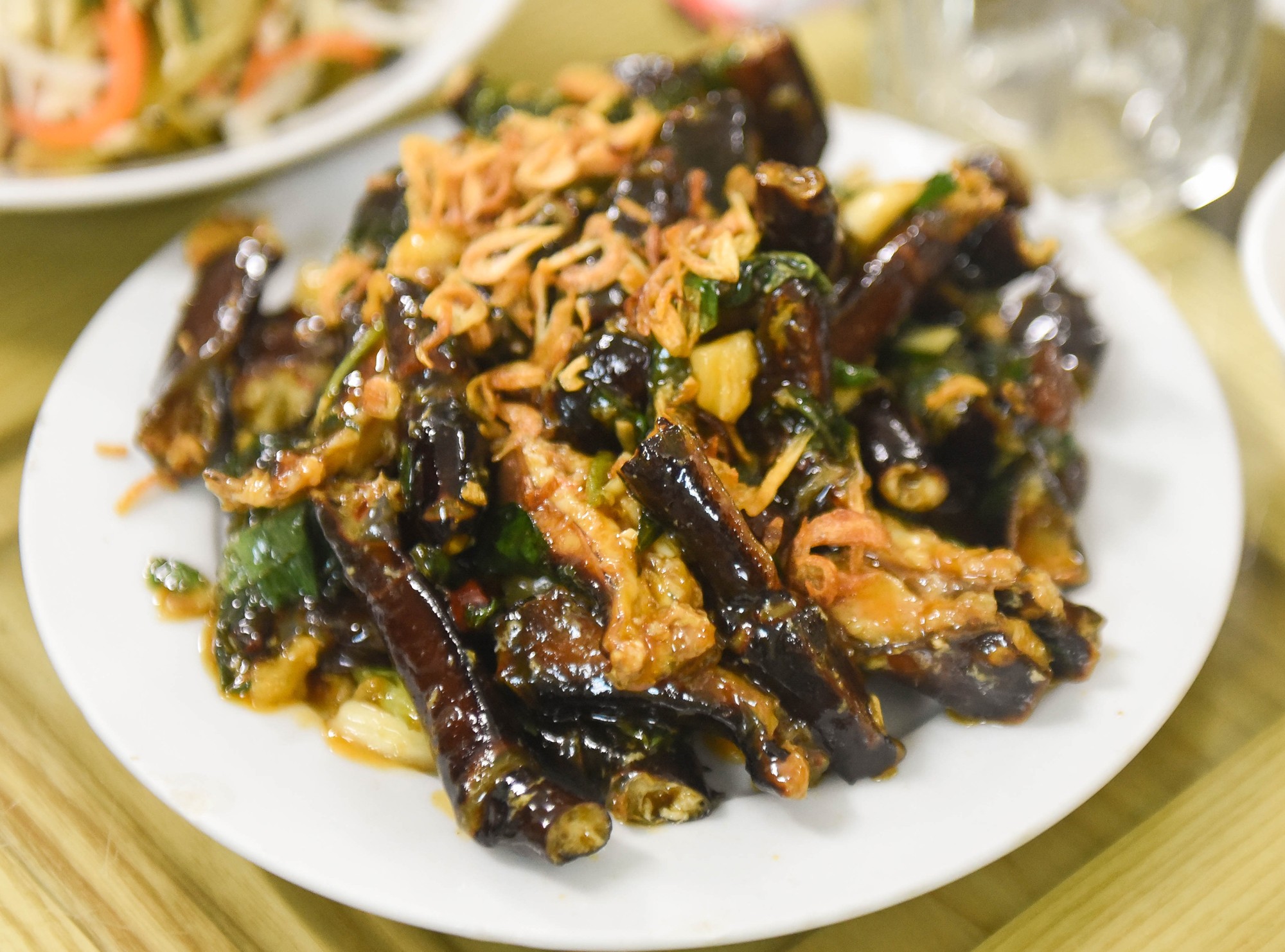
Roe Salad (Goi Trung Sam)
The roe is shredded and mixed with green mango, fresh herbs, roasted peanuts and lime juice. The tart-sweet dressing balances the buttery roe.
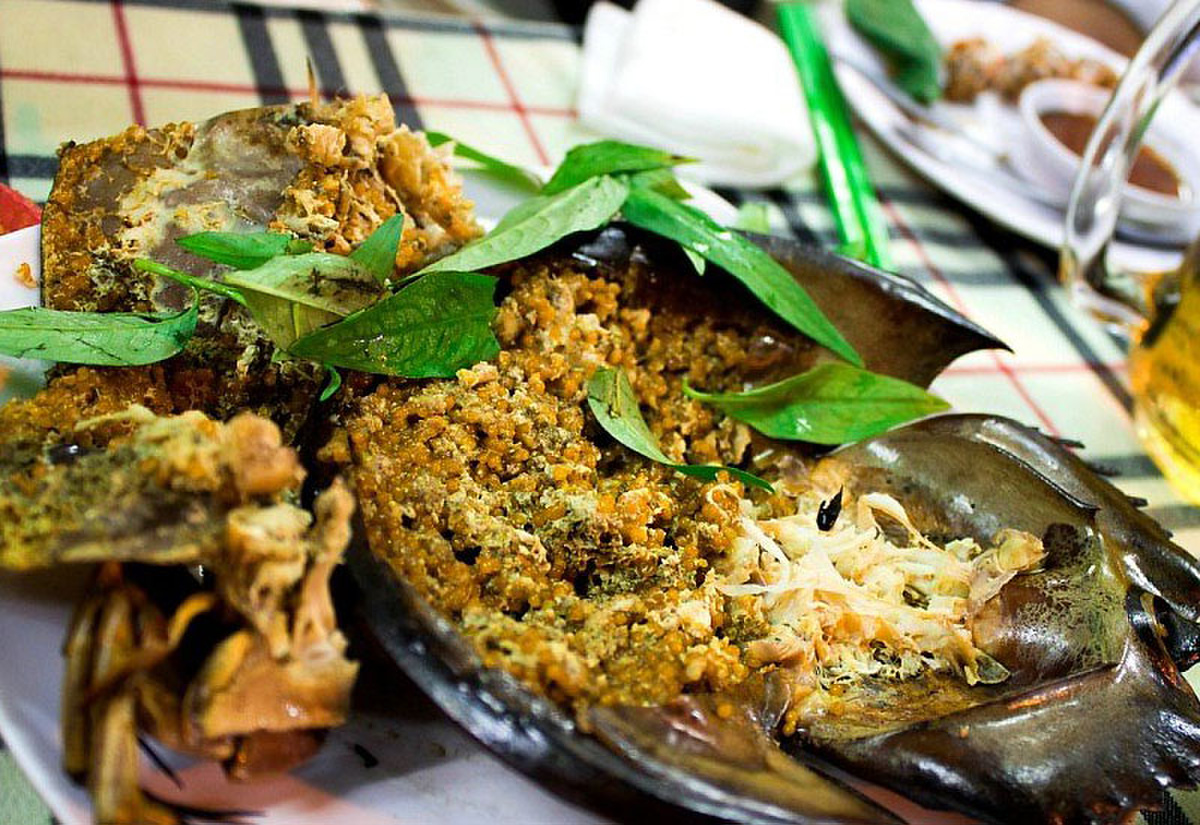
Other Local Takes
Some restaurants experiment with tamarind sauce, hotpot-style preparations, or porridge. Availability depends on the venue and season.
Safety First — What Travelers Must Know
Why Expert Prep Matters
Not every part of a horseshoe crab is edible. Skilled chefs know which sections to serve and which to discard. This is why ordering from reputable kitchens is essential.
Sourcing, Freshness & Handling
Choose busy restaurants or seafood markets with a strong reputation. Ask about freshness and how the crab will be cooked.
Ordering Tips
-
Confirm the weight and price per kilo before ordering.
-
Ask which cooking styles they recommend for first-timers.
-
Order alongside lighter dishes (greens, rice, clams) for balance.
Allergies & Sensitivities
Sam bien is considered shellfish; if you have crustacean allergies, avoid it. Sauces often contain fish sauce and peanuts—ask in advance if needed.
Where to Try Sam Bien in Halong
Bai Chay
Tourist-friendly, with seafood streets offering menus in English. Safer if you’re new to the dish.
Hon Gai
More local, authentic atmosphere. Market eateries often display live seafood, though English may be limited.
Night Markets vs Restaurants
-
Night Markets: lively atmosphere, bargain prices, adventurous vibe.
-
Restaurants: cleaner, more reliable preparation, better for cautious eaters.
Prices, Portions & Pairings
-
Pricing: Typically sold by weight, ranging from 400,000–800,000 VND per crab depending on size and roe quality.
-
Portions: One crab is usually enough for 2–3 people when combined with sides.
-
Pairings: Green mango salad, herbs, rice paper and light soups help balance the richness. A cold beer or iced tea completes the experience.
Is It for You? A Quick Decision Guide
-
Adventurous Eaters: Start with grilled or roe salad for bold flavor.
-
Cautious Eaters: Try stir-fried with lemongrass, more familiar taste.
-
Families: Mix sam bien with Halong staples like cha muc (squid patties) for variety.
Top 10 Things to Do in Halong Bay Besides Cruising
FAQ — Travelers Also Ask
Is sea horseshoe crab safe to eat in Halong?
Yes, when prepared by experienced chefs at reputable restaurants.
What does sam bien taste like?
A mix of firm crab-like meat and rich, smoky roe, balanced with herbs and chili.
What’s the best dish for first-timers?
Grilled sam with lemongrass, It highlights flavor without being overpowering.
How much does it cost?
Expect around 400,000–800,000 VND per crab, shared among 2–3 people.
Can I find it on Halong Bay cruises?
It’s rare on cruises; you’re more likely to find it in Bai Chay or Hon Gai restaurants.
A 3-Hour Food Trail to Try Sam Bien
-
Market Stop: Visit a seafood market in Hon Gai to see sam bien up close.
-
Restaurant Tasting: Order grilled sam + stir-fried lemongrass version, share with friends.
-
Sweet Finish: End with local dessert or coffee and maybe buy squid patties (cha muc) to take home.
Would You Try It?
Sam bien is not just a dish, It’s a Halong story. Its ancient shell, smoky aroma and bold flavors make it an unforgettable culinary adventure. For some, it’s a once-in-a-lifetime taste; for others, it becomes a must-order each visit. Either way, with the right chef and the right preparation, it’s one of Halong’s most authentic dining experiences. So, if you see how locals cook it, would you be brave enough to try sam bien on your next trip to Halong?









